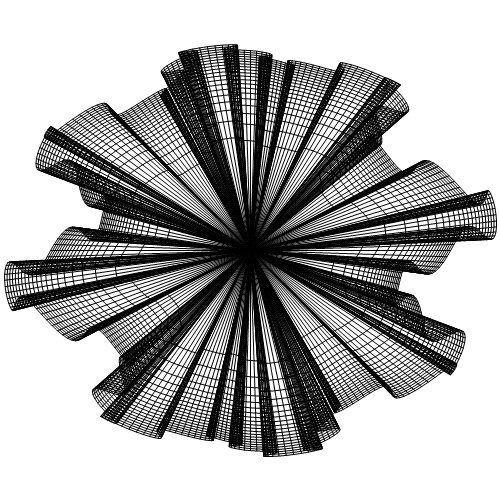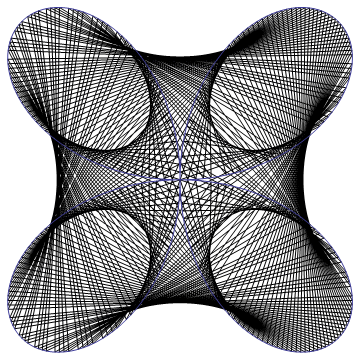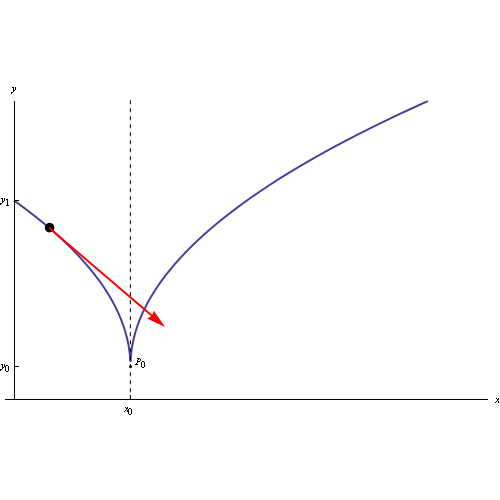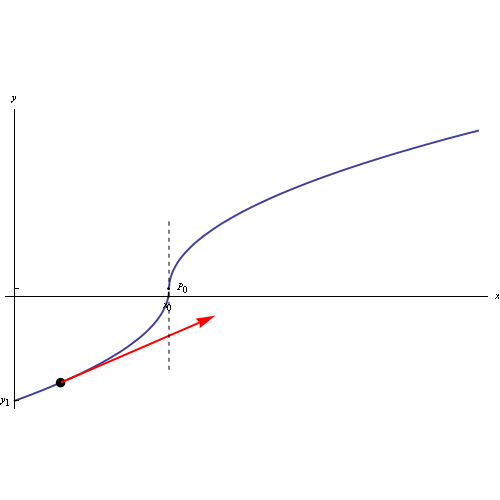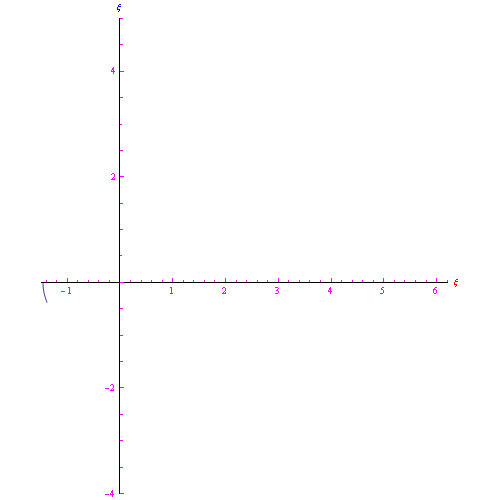La radice quantistica della coscienza. Oltre il modello di Penrose?
Luglio 20th, 2020 | by Marcello Colozzo |
As is known, quantum mechanics has highlighted the limits of physical determinism, destroying Laplace's dream about the possibility of predicting the mechanical state of the universe at all times. Incidentally, this paradigm is often metaphorically referred to as the "machine universe model". Otherwise, indeterminism returns an allegorical image very similar to that of a "vast thought" (James Jeans).
Note that these arguments do not imply the untruthfulness of determinism. On the contrary, the latter works very well at macroscopic scales (classical mechanics), while at submicroscopic scales the behavior of matter is governed by the laws of quantum mechanics, well represented by Heisenberg's famous uncertainty principle. Nonetheless, many physicists feel uncomfortable in the presence of an "indeterminate reality": if we cannot know the current quantum mechanical state of the universe, all the more reason we cannot predict its future state. Attempts to recover the "old determinism" therefore remain justified. As is well known, Albert Einstein was a determinist and did not share the ideas of the early quantum physicists. Erwin Schrödinger also had a deterministic vision of reality: the famous equation discovered by the eminent physicist returns a (wave) function that describes the propagation of a wave of matter. Due to some incompatibilities deriving from the discovery of the neutron, Max Born "corrected the shot" through a famous conceptual experiment, introducing the notion of probability wave in place of the matter wave conjectured by Schrödinger and De Broglie (later to be renamed pilot wave by David Bohm).
A more or less recent attempt was made by the English mathematical physicist Roger Penrose, according to which the collapse of the wave function of a quantum-mechanical system is a process of quantum gravity and therefore deterministic. However, it is a hypothesis, in the sense that the English mathematician did not develop a theory in the conventional sense of the term. A surprising consequence of this argument is the quantum origin of "consciousness". For Penrose, in fact, an "act of consciousness" is actually generated by the collapse of the wave function of quantum objects that make up the structure of a nerve cell (neuron). In this way, consciousness is interpreted through a deterministic process due to quantum gravity (Orch-Or Model).
However, the various attempts to recover physical determinism at all costs find no justification, in the sense that indeterminism could be an intrinsic behavior of the universe. Furthermore, the process of measuring a quantum observable is linked to the introspective ability of the experimenter. This inevitably recalls the autopoiesis paradigm of Maturana-Varela or rather its physiological extension to the bioelectrical components of the brain, conjecturing the existence of the neurosome. In this paradigm, the collapse of the wave function of the microtubules which gives rise to the phenomenon of consciousness is not due to effects of quantum gravity, but rather to the autopoietic capacity of the aforementioned bioelectrical components.
Come è noto, la meccanica quantistica ha evidenziato i limiti del determinismo fisico, distruggendo il sogno di Laplace circa la possibilità di prevedere lo stato meccanico dell'universo a tutti i tempi. Incidentalmente, tale paradigma è spesso metaforicamente denominato "modello dell'universo-macchina". Diversamente, l'indeterminismo restituisce un'immagine allegorica molto simile a quella di un "vasto pensiero" (James Jeans).
Si badi che tali argomentazioni non implicano la non veridicità del determinismo. Al contrario, quest'ultimo funziona benissimo a scale macroscopiche (meccanica classica), mentre a scale submicroscopiche il comportamento della materia è regolato dalle leggi della meccanica quantistica, ben rappresentate dal famoso principio di indeterminazione di Heisenberg. Nonostante ciò, molti fisici si sentono a disagio in presenza di una "realtà indeterminata": se non possiamo conoscere lo stato quanto-meccanico attuale dell'universo, a più forte ragione non possiamo prevedere lo stato futuro. Restano quindi giustificati i tentativi di recuperare il "vecchio determinismo". Come è ben noto, Albert Einstein era un determinista e non condivideva le idee dei primi fisici quantistici. Anche Erwin Schrödinger aveva una visione deterministica della realtà: la celebre equazione scoperta dall'eminente fisico, restituisce una funzione (d'onda) che descrive la propagazione di un'onda di materia. A causa di alcune incompatibilità derivanti dalla scoperta del neutrone, Max Born "corresse il tiro" attraverso un celebre esperimento concettuale, introducendo la nozione di onda di probabilità in luogo dell'onda di materia congetturata da Schrödinger e De Broglie (per poi essere rinominata in onda pilota da David Bohm).
Un tentativo più o meno recente, è stato eseguito dal fisico matematico inglese Roger Penrose, secondo cui il collasso della funzione d'onda di un sistema quanto-meccanico è un processo di gravità quantistica e quindi, deterministico. Si tratta comunque di una ipotesi, nel senso che il matematico inglese non ha elaborato una teoria nel senso convenzionale del termine. Una conseguenza sorprendente di tale argomentazione, è l'origine quantistica della "coscienza". Per Penrose, infatti, un "atto di coscienza" è in realtà generato dal collasso della funzione d'onda di oggetti quantistici che compongono la struttura di una cellula nervosa (neurone). In questo modo, la coscienza è interpretata attraverso un processo deterministico dovuto alla gravità quantistica (Modello Orch-Or).
Tuttavia, i diversi tentativi di recuperare a tutti i costi il determinismo fisico, non trovano giustificazione alcuna, nel senso che l'indeterminismo potrebbe essere una comportamento intrinseco dell'universo. Inoltre, il processo di misura di una osservabile quantistica è legata alla capacità introspettiva dello sperimentatore. Ciò richiama inevitabilmente il paradigma dell'autopoiesi di Maturana-Varela o meglio una sua fisiologica estensione ai componenti bioelettrici del cervello, congetturando l'esistenza del neurosoma. In tale paradigma, il collasso della funzione d'onda dei microtubuli che dà origine al fenomeno della coscienza, non è dovuto ad effetti di gravità quantistica, bensì dalla capacità autopoietica dei predetti componenti bioelettrici.
Tags: autopoiesi, meccanica quantistica, paradosso della misura
Articoli correlati


 Congettura di Riemann
Congettura di Riemann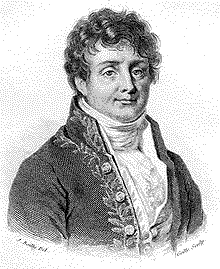 Trasformata discreta di Fourier
Trasformata discreta di Fourier
 Trasformata di Fourier nel senso delle distribuzioni
Trasformata di Fourier nel senso delle distribuzioni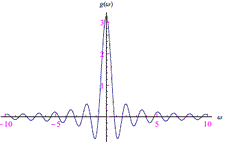 Trasformata di Fourier
Trasformata di Fourier  Infinitesimi ed infiniti
Infinitesimi ed infiniti Limiti notevoli
Limiti notevoli Punti di discontinuità
Punti di discontinuità Misura di Peano Jordan
Misura di Peano Jordan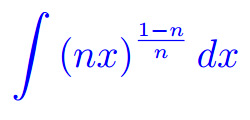 Eserciziario sugli integrali
Eserciziario sugli integrali Differenziabilità
Differenziabilità  Differenziabilità (2)
Differenziabilità (2) Esercizi sui limiti
Esercizi sui limiti Appunti sulle derivate
Appunti sulle derivate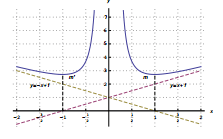 Studio della funzione
Studio della funzione Esercizi sugli integrali indefiniti
Esercizi sugli integrali indefiniti Algebra lineare
Algebra lineare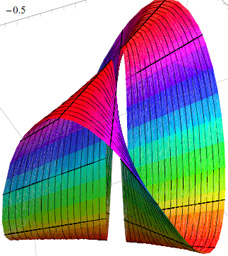 Analisi Matematica 2
Analisi Matematica 2 Analisi funzionale
Analisi funzionale Entanglement quantistico
Entanglement quantistico Spazio complesso
Spazio complesso Biliardo di Novikov
Biliardo di Novikov Intro alla Meccanica quantistica
Intro alla Meccanica quantistica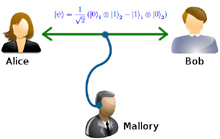 Entanglement Quantistico
Entanglement Quantistico